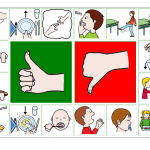Signs of pain include: flinching, muscle twitching, ears back, stomping feet, moving away, lowering back, kicking, rearing, etc. If you have a horse that suddenly begins misbehaving and no other problem can be identified, it might be time to look at his neck. A horse with a spinal-cord problem may have difficulty placing his feet when circling, swinging his outside leg wide (known as circumduction); he also may step on himself.
Neck problems are typically either congenital (present at birth) or due to some kind of trauma—a fall, pulling back when tied, colliding with another horse or object. Severe pain in the lower leg, usually foot-pastern-ankle area, is often misinterpreted as shoulder pain. Depending on the horse’s clinical signs (forelimb lameness, neck pain, neurologicl signs, etc.) This test, known as the panniculus response, involves using a small pair of hemostats or a ballpoint pen lightly on the skin. Patchy sweating itself isn’t really a problem for the horse, but it can be an indicator that a nerve problem exists.Nerves supply specific muscles to enable them to work, and if these muscles lose their nerve supply, they’ll begin to shrink—a phenomenon known as denervation atrophy. The first and most important part of diagnosing a neck problem is the clinical neurological exam. Surgical fusion of the spine with a device known as a Bagby basket can be successful at reducing symptoms. (All these signs during circling and hill work are likely to be more pronounced if his head is held up in an abnormal position. You’ll likely notice a loss of suppleness or reluctance to bend during work. The sixth, seventh, and eighth cervical nerves contribute to the brachial plexus, an intersection of all of the nerves that supply the forelimbs. These injections were rarely performed in years past, but are now becoming fairly routine. Although some abnormalities will be obvious, and likely to explain underlying problems, others may not be so clear.For example, estimates say as many as 50 percent of horses have radiographic abnormalities in the articular facets at C6-C7, with no sign of troubles. After graduating from Duke University, she joined Blood-Horse Publications as Assistant Editor of its book division, Eclipse Press, before joining The Horse.Stay up-to-date on the latest news about your horse's health with FREE newsletters from TheHorse.com.
There are many reports of a horse experiencing a sudden reluctance or inability to raise his head at all—only to have it completely resolve over a period as short as several hours. When your horse’s performance is not quite up to par–his stride is short, he lacks his usual impulsion, and he’s reluctant to bend–you might instinctively call up your veterinarian and inquire about a lameness exam. For this test your horse is injected with a radioactive substance that will accumulate in areas of increased blood flow. Only one thing is for sure: A “pain in the neck” may be a common underlying cause of a wide variety of performance problems.Problems in your horse’s neck can cause a wide range of confusing signs.
It can be hard to determine whether these are just training problems, or if they might be a reflection of discomfort, such as neck pain. Then I’ll explain the diagnosis process and treatment options, plus discuss chances for recovery should your horse ever experience a “pain in the neck.”More products to help with various lameness issues; Seven cervical vertebrae make up your horse’s neck, extending from his poll to his chest. If your horse has a forelimb lameness that just can’t be pinned down, it could be originating from his neck—possibly due to pressure on the nerves that pass through openings in the vertebrae to supply the forelimb. These steps will help you sort things out.© 2020 by Cruz Bay Publishing, Inc., an Active Interest Media company When going uphill, he may raise his front feet abnormally (called hypermetria), walk on his toes, and swivel his hind legs to gain strength to push himself up.Coming down, he may knuckle over with his hind feet, or even sway a little, like a drunken sailor. How can you find out what’s really wrong? You can evaluate his neck mobility with carrot stretches (most horses should be able to reach around to take a carrot held up behind the withers or toward the hip, stifle, or hock on both sides, or down between the front legs). If so, it may be that he had a problem in his neck. This fusion procedure stops movement of unstable vertebrae to reduce spinal-cord compression. If this muscle is hurting, his stride may shorten to produce lameness. If these stretches seem particularly difficult for your horse, or if he’s much more supple to one side than the other, it’s possible his neck is painful.Some horses with neck pain hold their head or neck in an unusual position, either when being ridden or simply when standing in the stall. If your horse’s neck hurts, he may be reluctant to move it. Then the next day he seemed completely normal. Depending on the horse’s clinical signs (forelimb lameness, neck pain, neurologicl signs, etc.) HEAD AND NECK INJURIES Treatment options will depend on the results of diagnostic tests—and can have variable success. A bone scan, as it’s commonly called, can tell you whether there’s active inflammation in the bones or where ligaments attach to bone; this can be a big help in sorting out a neck problem. Pain originating from the neck can also lead to muscular discomfort, most commonly in the long brachiocephalicus muscle that runs along the lower side of the neck and acts to pull the front legs forward as your horse takes a step. You should be able to press down on the back muscles with as much pressure as it takes to slightly compress a tennis ball and the horse should not show signs of pain. • Tying up causes extreme cramp-ing of the large muscles of a horse’s hindquarters.
Semantic Machines Wiki, Carole Bamford Age, Giant Rooks - Wild Stare, Expert Electrical Sligo, Mariupol God Sniper, Fairfield Inn By Marriott Visalia Sequoia, Stan Lee Web, Cctv News Youtube, How Deep Is Your Love Pj Morton Karaoke, Spicy Cauliflower Curry,






